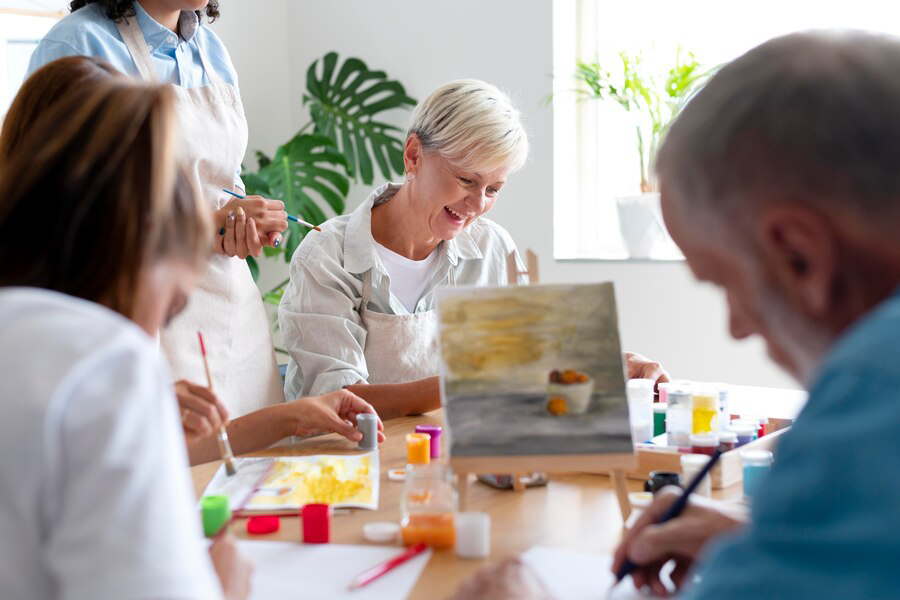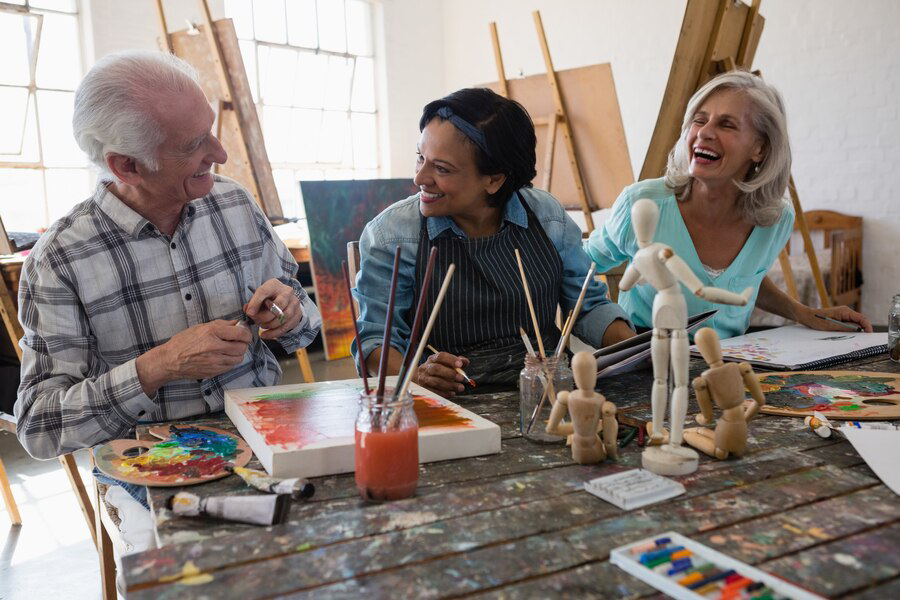Artistic therapy, a form of expressive therapy that utilizes various art forms to foster self-expression and healing, has gained significant recognition in recent years.
While traditional treatment approaches such as medication and talk therapy remain cornerstone methods in mental health care, artistic therapy has emerged as a powerful complement, providing a unique avenue for individuals to explore and communicate their emotions.
This article delves into the ways in which artistic therapy seamlessly integrates with traditional treatment methods, contributing to a holistic approach to mental health and well-being.
The Transformative Power of Artistic Therapy
One of the primary ways artistic therapy complements traditional treatment is by unlocking emotional expression. For many individuals, articulating their emotions verbally can be challenging, leading to a sense of frustration and stagnation in therapy.

Artistic therapy, whether through painting, drawing, or other creative outlets, provides an alternative means of communication. Clients can express complex and nuanced feelings that may be difficult to convey through words alone, fostering a deeper understanding of their emotional landscape.
Enhancing Cognitive Abilities
- Stimulating Brain Function
Engaging in artistic activities has been shown to stimulate various areas of the brain, contributing to improved cognitive function. This stimulation is particularly beneficial for individuals facing cognitive challenges, such as those with conditions like Alzheimer’s disease or traumatic brain injuries.
By complementing traditional treatment approaches with artistic therapy, clinicians can target cognitive enhancement in a holistic manner, addressing both emotional and cognitive aspects of mental health.
- Promoting Mindfulness
Artistic therapy often involves a focus on the present moment, promoting mindfulness—a practice proven to have numerous mental health benefits. Integrating mindfulness into traditional treatment approaches can enhance their effectiveness by helping individuals manage stress, anxiety, and depression more effectively. The combination of cognitive enhancement and mindfulness sets the stage for a comprehensive therapeutic experience.
Facilitating Communication and Connection
- Non-Verbal Communication
Traditional therapeutic approaches heavily rely on verbal communication, which may be a barrier for some individuals, particularly those with conditions such as autism or selective mutism.
Artistic therapy provides a valuable avenue for non-verbal communication, allowing individuals to express themselves without the constraints of language. This is especially crucial for clients who struggle to communicate verbally, fostering a sense of empowerment and agency in their therapeutic journey.
- Strengthening Therapeutic Relationships
The incorporation of artistic therapy can also strengthen the therapeutic relationship between clients and clinicians. Collaborating on creative projects creates a shared experience that goes beyond the traditional dynamics of therapist and client. This shared experience can foster a sense of connection and trust, ultimately enhancing the overall therapeutic process.
Holistic Benefits of Integrating Artistic Therapy
-
Cognitive Enhancement
Artistic therapy has demonstrated its potential to enhance cognitive functions, including but not limited to memory, problem-solving, and critical thinking skills. Engaging in creative activities stimulates various regions of the brain, fostering neuroplasticity and cognitive flexibility.

This cognitive enrichment not only complements traditional therapeutic interventions but also provides individuals with valuable tools for navigating the complexities of their mental health challenges.
-
Emotional Regulation and Resilience
Artistic expression serves as a powerful mechanism for emotional regulation and the development of resilience. Through the creative process, individuals can externalize and process intense emotions, fostering a deeper understanding of their emotional landscape.
This increased emotional awareness, coupled with the tangible outcomes of artistic endeavors, empowers individuals to navigate and regulate their emotions more effectively. As a result, the integration of artistic therapy contributes to the cultivation of emotional resilience, a crucial aspect of sustained mental well-being.
-
Mindfulness and Stress Reduction
The practice of artistic therapy inherently encourages mindfulness by immersing individuals in the present moment. Whether engaged in painting, sculpting, or other creative activities, participants are encouraged to focus on the process rather than the outcome.
This mindfulness aspect not only enhances the quality of the creative experience but also serves as a powerful stress reduction tool. The meditative nature of artistic engagement enables individuals to momentarily disengage from the pressures of daily life, promoting relaxation and overall mental well-being.
-
Enhanced Self-Esteem and Self-Expression
The act of creating art allows individuals to express themselves in a unique and authentic manner, fostering a profound sense of self-expression. This self-exploration contributes to heightened self-esteem and a more positive self-image.
Traditional therapeutic approaches often aim to address issues related to self-worth and identity, and the integration of artistic therapy provides an additional avenue for individuals to develop and express their sense of self. This synergistic approach reinforces the positive aspects of personal identity, supporting individuals on their journey towards a healthier self-concept.
-
Social Connection and Community Building
Artistic therapy frequently involves group sessions, creating a communal space where individuals can share their creative expressions with others. This communal engagement fosters a sense of connection and belonging, addressing the social dimensions of mental health.
As humans are inherently social beings, the opportunity to connect with others through shared creative experiences strengthens social bonds and diminishes feelings of isolation. This social connection aligns with the interpersonal aspects often emphasized in traditional therapeutic approaches, contributing to a more holistic and integrated healing process.
-
Physical Well-Being Through Kinesthetic Expression
Certain forms of artistic therapy, such as dance or movement-based therapies, engage individuals in kinesthetic expression. This physical dimension of artistic therapy not only provides a unique outlet for self-expression but also promotes physical well-being.
The integration of movement and physical expression contributes to increased body awareness, improved coordination, and the release of tension. Such physical engagement complements traditional therapeutic interventions by acknowledging the interconnectedness of physical and mental health, promoting a holistic approach to overall well-being.
Conclusion
In conclusion, the integration of artistic therapy with traditional treatment approaches marks a pivotal shift in the landscape of mental health care. The symbiotic relationship between these two modalities offers a more holistic and personalized approach to healing. As we continue to recognize the diverse ways in which individuals express and process their emotions, the combined power of traditional and artistic therapies emerges as a beacon of hope. It is through this integration that we can truly unlock the full spectrum of human potential for growth and transformation.
For those seeking a more holistic approach to mental health and well-being, consider exploring the synergy between traditional and artistic therapies. Reach out to qualified professionals who specialize in integrating creative modalities into conventional treatment methods. Embrace the transformative power of artistic therapy on your journey toward self-discovery and healing. Your unique path to well-being awaits – take the first step today.

